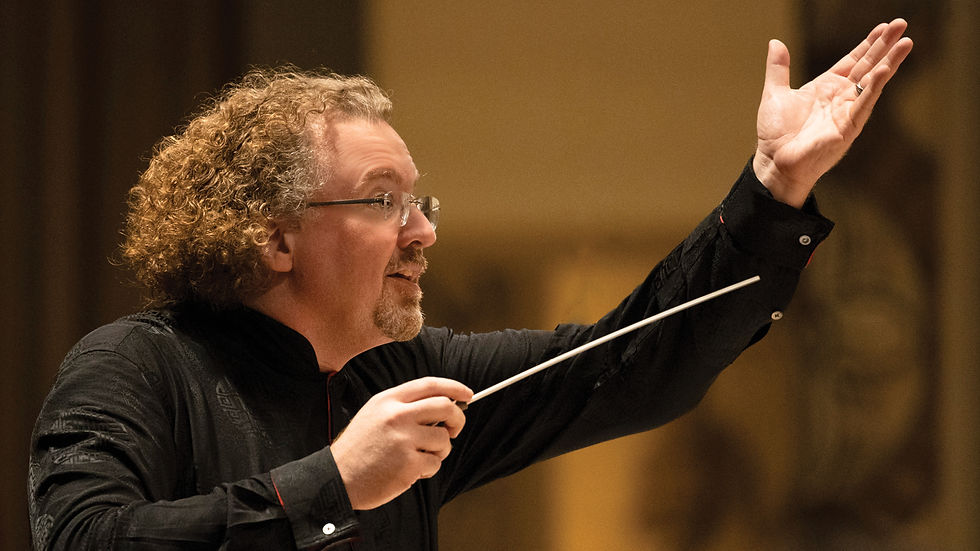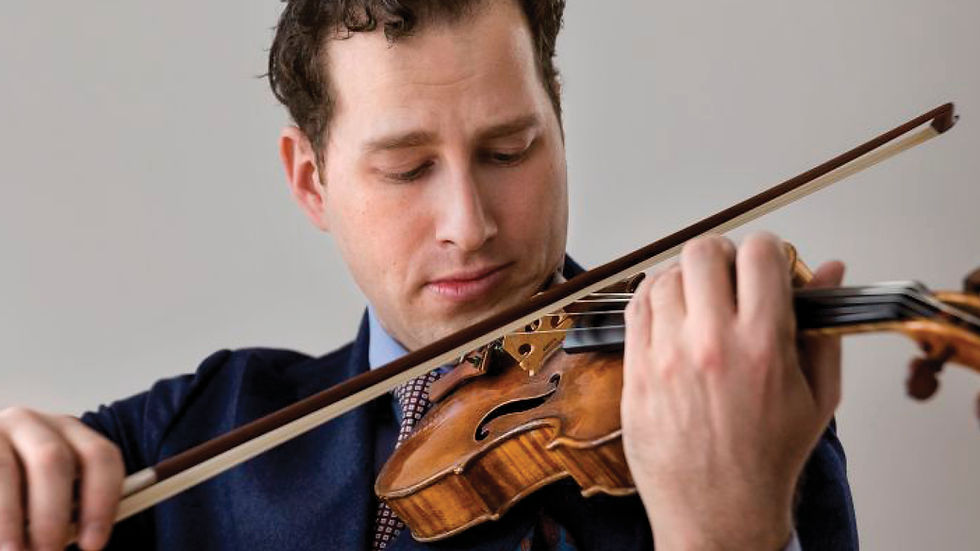Program Notes: Strauss and Mozart (April 30-May 2, 2021)
- SLSO
- Apr 26, 2021
- 4 min read
Updated: Jul 29, 2021
Program
Stéphane Denève, conductor
Richard Strauss
Serenade for Winds in E-flat major, op. 7, TrV 106 (1882)
Wolfgang Amadeus Mozart
Serenade No. 10 in B-flat major, K. 361 (370a), "Gran partita" (1782)
Program Notes
By Caitlin Custer
Stéphane on this concert
From an interview with Stéphane Denève. Stéphane’s responses have been edited for length and clarity, and questions have been removed.
This program of wind music is all about opportunity. For Mozart, it was the opportunity to try out a new ensemble and a new sound. For Strauss, this piece was a big break, an opportunity that led to performances by a major court orchestra and a commission from Hans von Bülow, a leading conductor of the day.
This theme of opportunity continues for us today. For our musicians, it is a chance to tackle Mozart’s “Gran partita” Serenade, an iconic work that will fill Powell Hall with lush sound. For me, it’s the opportunity to feel immense happiness from conducting the Adagio from this Serenade. And for all of us, it’s an opportunity to get to know this orchestra more deeply, to find even more beautiful colors as we experience the power of music together, again.
Meet the Winds
Have you ever found the orchestra’s wind section mysterious? They seem so different from one another: reeds alongside tubes, metal alongside wood. Wolfgang Mozart’s and Richard Strass’s wind serenades share several instruments in common, giving you a chance to get to know each sound.
Oboe: A high voice among the orchestra. Its reedy, throaty tone can signal jovial spirits one moment, lament the next.
Clarinet: The instrumental form of the expression "work hard, play hard." At work: a mellow, inner voice. At play: a fiery jazz ax.
Bassoon: A similar tone to the oboe, in a much bigger body. Equally at home humming melodies or punching rhythms.
Horn: The horns live at the intersection of warmth and power. The orchestra's chewy center.
Strauss extends the range of his serenade by adding to the top and bottom of the ensemble:
Flute: A brilliant, silvery breeze whistling through the trees.
Contrabassoon: The bassoon's big brother. Vibrating, subwoofer bass. In this performance, a double bass will substitute for contrabassoon.
Mozart grounds the ensemble, adding another middle voice, and, like Strauss, a deeper bass line:
Basset Horn: The basset horn—a popular Classical-era, clarinet-like instrument—fills the gap between Mozart’s clarinet and bassoon. The same rich tones as the clarinet, but more comfortable just a few steps lower.
Double Bass: Though a string instrument, the wind ensemble often invites the double bass to their parties to provide a deep, harmonic bedrock.

Serenade for Winds
Richard Strauss
Born June 11, 1864, Munich, Germany
Died September 8, 1949, Garmisch-Partenkirchen, Germany
Richard Strauss was steeped in classical music, in large part thanks to his father’s reputation as a revered horn player and emphasis on making music at home. The older Strauss exalted Classical-era music and detested the new, melodramatic, Romantic music of the day.
For the Serenade, Richard stuck to what he knew and what his father preached, emphasizing order and propriety. Even so, a glimmer of his future sound—lush, radiant, and sublime—peeks through.
Richard was 17 when he wrote the Serenade. For many, those late teenage years are a time when friendships are valued above all else. And that’s what we have here: a group of friends talking, joking, connecting.
A gentle musical character opens the piece: the host with the most, inviting their friends inside for a party. For a while, the conversation is stately, upstanding—until the fashionably late, theatrical friend arrives with all the latest gossip. The guests loosen up, laughter erupts.
As is natural among friends, laughter eventually turns to serious conversation about life’s big questions. These shared moments are deeply felt, meant to be savored for a lifetime.
First performance: November 27, 1882, in Dresden, Germany, Franz Wüllner conducting
First SLSO performance: March 23, 1917, Max Zach conducting
Most recent SLSO performance: September 27, 2009, Ward Stare conducting
Scoring: 2 flutes, 2 oboes, 2 clarinets, 2 bassoons, contrabassoon (sub double bass), 4 horns
Approximate performance time: 10 minutes

Serenade No. 10, K. 361
W.A. Mozart
Born January 27, 1756, Salzburg, Austria
Died December 5, 1791, Vienna, Austria
Like Richard Strauss, Wolfgang Mozart struggled to free himself from his father’s shadow. If Leopold Mozart was around today, we might call him a “pageant dad,” keeping a busy, lucrative schedule for his son and living vicariously. But for the young Mozart, the European tours and coveted court position in Salzburg were unsatisfying—at times even insulting.
In his twenties, Mozart set out for the artistic promised land of Vienna, burning bridges with patrons and his father behind him. In a few short years, he came into his own as a freelance composer, husband, and father.
The Serenade was written during this new period of self-determination. At the time, “serenade” was a moniker for party music, something light, consumable. But Mozart’s is deliberate and nuanced.
There are a few clues to this Serenade’s difference even before the music starts. For a composer known to write at top speed, the manuscript appears unrushed, like it came from a careful stretch of writing.
There’s some debate as to whether Mozart intended the subtitle “Gran partita” (grand suite), but in either case it is unique among his works. One more clue is the unexpected ensemble, which is roughly twice the customary size for this genre.
Largo—Allegro molto: A distinguished curtain-raiser, calling your attention away from spoken conversation and into musical conversation.
Menuetto: A graceful dance, with a dash of spice for good measure.
Adagio: “[S]o wonderful, so mysterious that it has you thinking ‘What will happen?’ It’s a magical, ceremonial moment,” wrote the celebrated composer and conductor Pierre Boulez.
Menuetto: Allegretto: Another dance, this time upbeat and chipper.
Romanze: Adagio—Allegretto—Adagio: Brief excitement flanked by long, deep breaths.
Thema mit Variationen: A playful walk in the gardens.
Rondo: Allegro molto: A burst of motion. Serve the coffee, gather the coats, get the guests on their way!
First performance: Probably in spring of 1784 in Vienna, by an ensemble including clarinetist Anton Stadler, a close friend of Mozart’s
First SLSO performance: January 15, 1966, Hermann Scherchen conducting
Most recent SLSO performance: April 25, 2003, David Amado conducting
Scoring: 2 oboes, 2 clarinets, 2 basset horns, 2 bassoons, 4 horns, double bass
Approximate performance time: 43 minutes
Caitlin Custer is the SLSO's Communications Manager.
Program Notes are sponsored by Washington University Physicians.




Comments